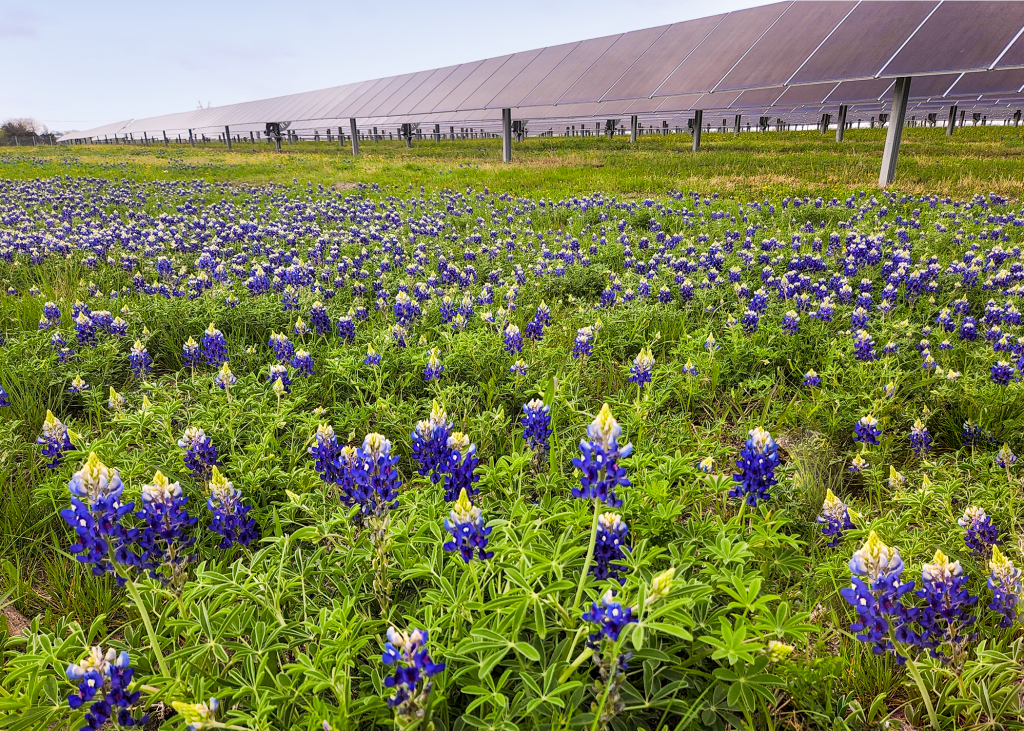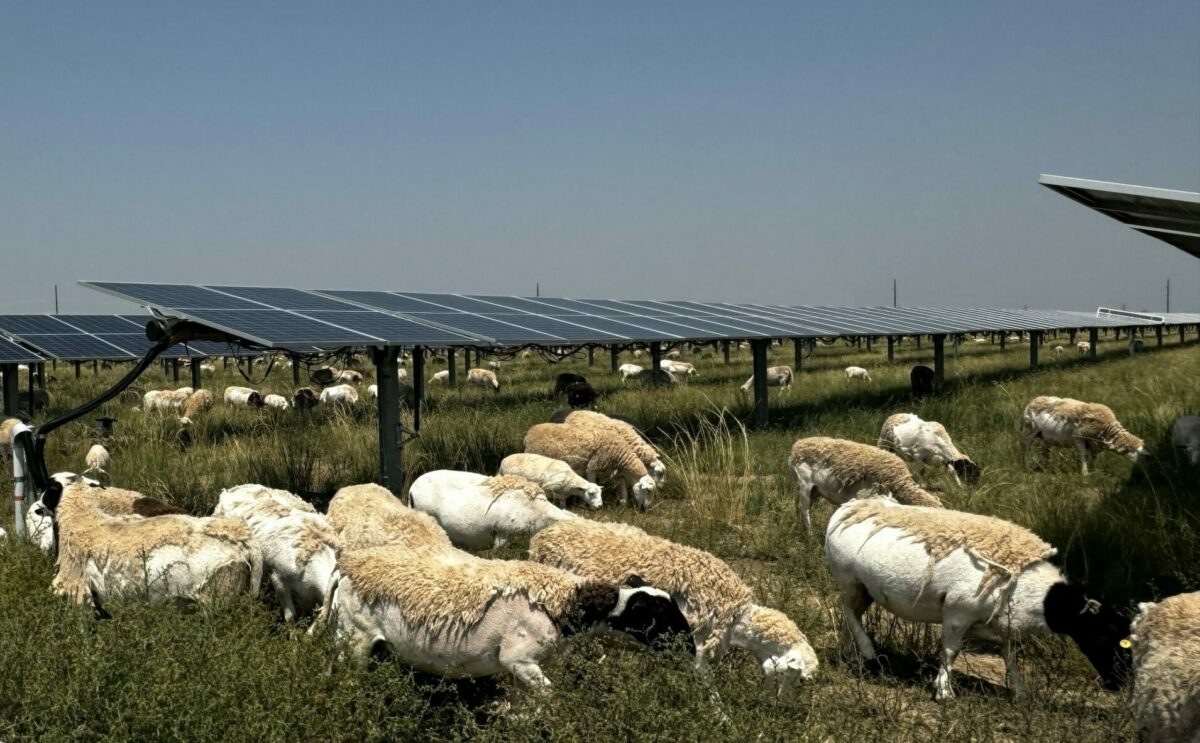Supporting sheep farming, honey production and biodiversity at Elm Branch and Briar Creek solar farms
Solar farms can simultaneously support renewable energy generation and thriving ecosystems. Two Lightsource bp projects in Texas are showing America how it’s done: increasing local biodiversity together with using land for agricultural production.
Elm Branch and Briar Creek solar farms are located 40 miles south of Dallas. In addition to providing a combined 316MW of clean energy and abating more than 400,000 metric tons of CO2 each year for healthier air, the projects are increasing local biodiversity—the variety of species in the area.

Blue Bonnets, the Texas state flower, in bloom at Elm Branch Solar
Areas on both sites have been planted with a specialized seed mix, designed by a team of experts to offer habitat for pollinating insects and nutritious forage for sheep. The seed mix contains numerous native grasses, including sand dropseed, little bluestem, blue grama, sideoats grama, Virginia wildrye and western wheatgrass. Selecting species that are native to the area ensures they’ll acclimate and thrive, as well as providing a home for native insects, birds and more.
Partnerships for pollinators: Habitat and beekeeping at the solar farm
Pollinators are crucial for supporting agriculture worldwide but populations have been declining due to habitat loss and pesticide use. The solar farms are providing a safe home for the bees and butterflies that pollinate surrounding farmland.
The seed mix underneath the panels also contains three species of pollinator-friendly clover, a rich source of pollen and nectar for bees and butterflies. In addition, Briar Creek is also home to Lightsource bp’s first solar honey operation in the United States.
One of the families leasing land for the solar farm has set up a bee yard among wildflowers. With hives surrounded by Illinois bundleflower, Engleman daisy, Partridge pea, Black-eyed Susan, Maximilian sunflower and more, the bees at the solar farm will be able to forage for pollen and nectar in the rich habitat on-site.
The partnership is helping a new generation grow the family’s bee business, with the landowner’s son-in-law tending to the honey production. Lightsource bp has a contract to purchase 500 jars of honey from the solar farm annually. The family will be able to sell the rest at their discretion, building up their bee business one jar at a time.
Sheep grazing at the solar farm
Solar grazing, perhaps the most common form of agrivoltaics, introduces sheep to solar farms. Farmers use the land under and around the solar panels to graze their flocks, and the sheep “mow the lawn” naturally as they move throughout the site in a planned rotation. Today, five farm families are tending their flocks across the full Elm Branch and Briar Creek solar sites, with a collective total of over 1,000 sheep.
Contracts for grazing services provide farmers with a reliable source of new income, on top of what they earn via the wool, dairy or meat they produce. At Briar Creek and Elm Branch, several of our grazing partners are families leasing their own land to the solar farms. These partners may see as many as three revenue streams from their land: lease payments, grazing contract and agricultural products. Increased, diversified revenue and access to productive land helps a farm increase its resilience, or even grow.
Amanda Stoffels and her family lease part of their land for the Elm Branch solar farm, for example. They are also contracted grazing partners, raising their flock of sheep among the panels. Partnering with the solar farm has enabled Amanda to leave her 9-to-5 job and realize her lifelong dream.
“My husband and I both sought out to get a farm, but I never would have ever dreamed that I would be a head shepherdess, with a flock of sheep that know me and come running,” Amanda said. “The solar field is a big instrument in allowing us to full-time farm.”
Discover Multiuse Solar
This project is one example of our commitment to co-locating responsibly sited solar projects with other land uses in the United States—an approach dubbed “dual-use solar.” Lightsource bp often goes a step further, building multiuse solar projects where clean energy generation shares land with multiple initiatives including agriculture, conservation, and research.
Multiuse solar in action
03 Sep, 2024
Solar Synergy in Indiana: Our Bee & Butterfly Habitat Fund partnership at Honeysuckle Solar
Partnership for pollinator conservation
24 Jul, 2024
Restoring prairie, raising sheep and sinking carbon in Colorado
Sinking carbon on solar farms: A new kind of PV + Storage




